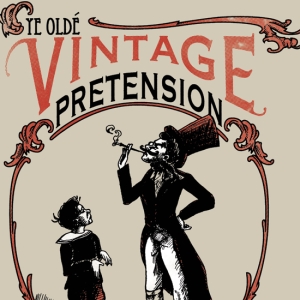Ronald L. Doering, BA, LL.B. MA, LL.D., a past president of the Canadian Food Inspection Agency and now counsel in the Ottawa offices of Gowling WLG, writes in his Food in Canada column that the science keeps piling up.
 It is not safe to consume raw milk and its products. The U.S. Food and Drug Administration (FDA) recently announced studies that show again that pathogens from raw milk including tuberculosis, diphtheria, typhoid, Salmonella, Listeria, and many other bacterial infections make it unsafe for human consumption. A comprehensive study was released last month by Belgian authorities that concluded that “raw milk poses a realistic health threat due to possible contamination with human pathogens.” Interestingly, the same study found that there was “no substantial change in the nutritional value of raw milk or other benefits associated with raw milk consumption,” but that’s a story for another day. And, of course, the unfortunate proof keeps coming, with hundreds of outbreaks, many deaths and thousands of illnesses just in the last few years due to raw milk and raw milk cheese.
It is not safe to consume raw milk and its products. The U.S. Food and Drug Administration (FDA) recently announced studies that show again that pathogens from raw milk including tuberculosis, diphtheria, typhoid, Salmonella, Listeria, and many other bacterial infections make it unsafe for human consumption. A comprehensive study was released last month by Belgian authorities that concluded that “raw milk poses a realistic health threat due to possible contamination with human pathogens.” Interestingly, the same study found that there was “no substantial change in the nutritional value of raw milk or other benefits associated with raw milk consumption,” but that’s a story for another day. And, of course, the unfortunate proof keeps coming, with hundreds of outbreaks, many deaths and thousands of illnesses just in the last few years due to raw milk and raw milk cheese.
Just because raw milk and raw milk cheese are not as safe as if they were pasteurized doesn’t necessarily mean that they should be banned. That is why regulations around the world are so inconsistent. The sale of raw milk is illegal in Scotland, but legal in England, Wales and Northern Ireland (indeed our future king will drink nothing else, a fact that could be used by both sides of the debate!). South of the border the states are roughly evenly divided, but interstate commerce is banned. Raw milk and most raw milk cheeses are banned in Australia but legal in New Zealand. In Canada, the sale of raw milk directly to consumers is prohibited by a variety of provincial provisions and it is a federal crime to sell unpasteurized milk under B.08.002.2(1) of the Food and Drug Regulations.
Canada continues to allow the sale of raw milk cheeses aged over 60 days, but provides this clear warning: “Health Canada’s ongoing advice to pregnant women, children, older adults and people with a weakened immune system is to avoid eating cheese made from raw milk as it does present a higher risk of foodborne illness than pasteurized milk cheeses. If consumers are unsure whether a cheese is made from pasteurized milk, they should check the label or ask the retailer.”
 When I first wrote about this issue three years ago I pointed out the regulatory absurdity of the last sentence in the Health Canada (HC) warning. There is no requirement to label and most retailers have no idea if the cheese is made from raw milk, and have no means to determine if it is. At the time I received an informal response to my article from a senior official advising me that before moving to mandatory labelling, HC was going to partner with FDA to do a risk assessment of raw milk cheese, focusing specifically on the risk of illness from Listeria monocytogenes. The results of this risk assessment were released last summer: “The risk of listeriosis from the consumption of soft-ripened cheese made from raw milk is substantially larger than that for consumption of soft-ripened cheese made from pasteurized milk and the 60-day aging regulation actually increases the risk of listeriosis for consumption of raw milk cheeses.” The risk was found to be from 50 to 160 times greater. This resulted in HC issuing a Voluntary Guidance to manufacturers that included suggestions to industry to do regular testing of both the raw milk and the cheese and that “Manufacturers should consider labelling their products with the words ‘made from raw or unpasteurized milk’ on the front panel display and/or in the list of the ingredients.”
When I first wrote about this issue three years ago I pointed out the regulatory absurdity of the last sentence in the Health Canada (HC) warning. There is no requirement to label and most retailers have no idea if the cheese is made from raw milk, and have no means to determine if it is. At the time I received an informal response to my article from a senior official advising me that before moving to mandatory labelling, HC was going to partner with FDA to do a risk assessment of raw milk cheese, focusing specifically on the risk of illness from Listeria monocytogenes. The results of this risk assessment were released last summer: “The risk of listeriosis from the consumption of soft-ripened cheese made from raw milk is substantially larger than that for consumption of soft-ripened cheese made from pasteurized milk and the 60-day aging regulation actually increases the risk of listeriosis for consumption of raw milk cheeses.” The risk was found to be from 50 to 160 times greater. This resulted in HC issuing a Voluntary Guidance to manufacturers that included suggestions to industry to do regular testing of both the raw milk and the cheese and that “Manufacturers should consider labelling their products with the words ‘made from raw or unpasteurized milk’ on the front panel display and/or in the list of the ingredients.”
The Guidance document seeks feedback from stakeholders before developing new “policy and/or regulatory options.” Here’s mine, again: stop the bureaucratic dithering and do what the Americans, Brits and Europeans have already done – make it mandatory for all manufacturers to label their raw milk cheeses. It’s useless, as they say, to try to reason someone out of something they didn’t reason themselves into, so if we can’t stop people from consuming raw milk and its products, then let’s at least ensure that it is not consumed unknowingly particularly by children, the elderly or expectant mothers. HC now requires unpasteurized juice to be labelled. Who’s against mandatory labelling of raw milk cheese?







 something with stamps or coins before food safety – practices food law in Ottawa (that’s in Canada) and shares his thoughts in a monthly column for Food in Canada.
something with stamps or coins before food safety – practices food law in Ottawa (that’s in Canada) and shares his thoughts in a monthly column for Food in Canada.